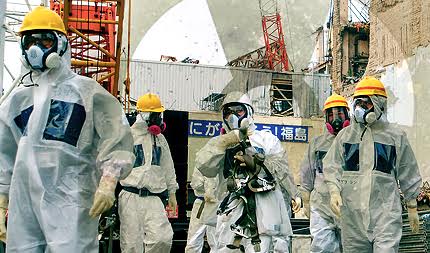You are here
D02-1:Radiation Emergencies

D02-1:Radiation Emergencies

Course Information
Radiation is all around us, both natural and man-made. Although everyone is exposed to radiation every day, misunderstanding about radiation is common. This course will provide learners with an overview of issues in relation to radiation emergencies. In particular, it introduces the basics of radiation, health effects of acute exposure to radiation and measures in response to a radiation emergency.
- Section One is an introduction about the basics of radiation. For instance, the difference between ionizing and non-ionizing radiation and the different ways to measure radiation.
- Section Two is about the health effects of acute exposure to radiation. For instance, the mechanisms by which ionizing radiation damages our cells and the clinical manifestations of acute exposure are introduced.
- Section Three discusses the measures in response to a radiation emergency. For instance, the principles of emergency department preparedness, the use of personal protective equipment and the procedures to decontamination are presented.
Upon successful completion of this course, you will be able to:
- Explain the causes and consequences of a radiation emergency
- Identify the health risks of a radiation emergency
- Demonstrate the procedures for preparedness and protection for a radiation emergency
- The Radiation Basics
- Exposure to Radiation
- Ionizing Radiation (Optional)
- Detection and Measurement of Radiation: Introduction
- Radiation Dose Measurements
- Survey Meters and Dosimetry (Optional)
- Atomic Bombings
- Nuclear Plant Accidents
- Other Radiation Accidents
- Radiation Injuries
- Clinical Effects of Acute Exposure to Radiation (I)
- Clinical Effects of Acute Exposure to Radiation (II)
- Clinical Effects of Acute Exposure to Radiation (III)
- Emergency Department Preparedness for Radiation Disasters
- Personal Protective Equipment: Donning
- Personal Protective Equipment: Removing
- Decontamination: Surveying
- Decontamination: Open Wound
- Decontamination: Face
- Decontamination: Intact Skin and Final Surveying
The following table explains the breakdown for what is required in order to pass the class.
|
Assessment Scheme |
Description |
Passing Grade |
|
Quiz 1 Quiz 2 Quiz 3 |
MCQs administered after Section 1 MCQs administered after Section 2 MCQs administered after Section 3 |
70% or more 70% or more 70% or more |
Students achieving 70% total percentage will be issued a certificate of completion.



